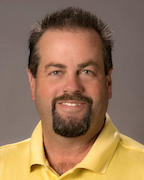By Guest Bloggers Heather Daly, Courageous Hearts and Normandie Nigh, A World Fit for Kids (Note:
This blog was originally developed for
The Afterschool Alliance.)
 |
| Heather Daly and Normandie Nigh |
So… you want to bring social emotional learning (SEL) to your afterschool program? Great! Before you decide which curriculum you’ll teach your students, it’s important to ask yourself if your staff are trained on how to deliver SEL content. Conveying SEL skills and modeling them to young people requires specific competencies in addition to an educator’s existing skill set. In a previous
blog, we talked about the importance of teaching our young people methods to navigate stress and uncomfortable emotions. Today we will discuss why educators need training to deliver this type of content, and also share some common pitfalls when incorporating SEL content.
The etymological origin of “educate” comes from the Latin root “educaré,” which means “to draw out from within.” Many teachers are trained with an “outside-in” approach to education. The theory is that there is information out there that we as a society have decided young people should know. A teacher’s role is to get that information into them, like filling a bucket. However, the core of all SEL curricula is empowering young people and honoring their inner wisdom — an “inside-out” approach. Because of this, SEL curriculum must be facilitated, not taught. Traditionally, scholastic subjects like math, science, and English are taught using an outside-in approach; using the same method to deliver SEL content is doomed to fail.
“Whoever our students may be, whatever subject we teach,
ultimately we teach who we are.” - Author, Educator and
Activist Parker Palmer
 |
| Source: Afterschool Alliance |
Additionally, for the population of students who need a trauma-informed approach, their social and emotional needs must be addressed before academics. Trying to get information into the mind of a young person while they are engaged in a stress response is futile. This can be frustrating for educators who don’t have the facilitation tools to address social emotional needs. Ideally, educators would become adept at learning when to teach and when to facilitate.
Another challenge for successful delivery of SEL content has to do with the need to model it to the students to effectively teach it. SEL is necessarily responsive and works moment-to-moment over time; because it’s all about behaving and interacting, a “do as I say, not as I do” approach doesn’t work. Students learn and emulate self-awareness from someone who is demonstrating it. For this reason, educators must continue to develop their own social emotional skills so they can set the example — working on their personal development, becoming more self- and socially aware, learning how to manage their own stress, and walking the talk.
Also, delivering SEL blocks once or twice a week is not nearly as effective as being immersed in an SEL-based culture in which all adults that interact with students are participating in continued social and emotional growth. It requires lots of buy-in from other adults in the community, but principals, afterschool staff, teachers, security guards, and janitorial staff all must be trained to support this SEL framework. (We recognize this can be a tall order! But the payoff is enormous.)
“With SEL-focused training that helps providers better
understand and develop their own SEL skills, they can
intentionally model SEL for kids, find teachable moments in
everyday activities, and simply be the supportive and caring
adult that all kids need.”- National AfterSchool Association
Educators across the country are being asked to deliver SEL curriculum and attend to the social and emotional needs of their students. Training on how to facilitate this type of content is essential, as is supporting educators with developing their own social emotional prowess.

To be successful in creating an SEL-competent culture, educators must learn the art of facilitation to deliver this unique content and must model it to all students. By honoring our young people’s hearts, emotions and the inner wisdom that guides them on their own path, we will strengthen them from the inside out to stand forward as tomorrow’s leaders.
………………
Heather E. Daly, Ph.D. is the Director of
Courageous Hearts, an organization committed to educating afterschool staff with drug education and prevention content.
Normandie Nigh is the Chief Executive Officer of
A World Fit for Kids, whose mission is to prepare young people for fit and fulfilling lives. To learn more about the training opportunities available for afterschool staff and program providers, visit
Courageous Hearts and
Fit For Success, a project of A World Fit For Kids.

























